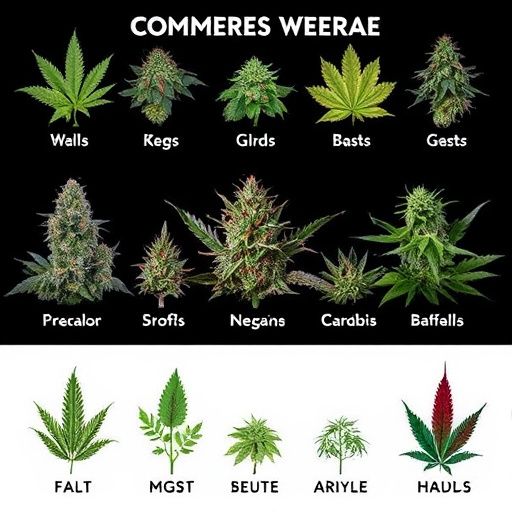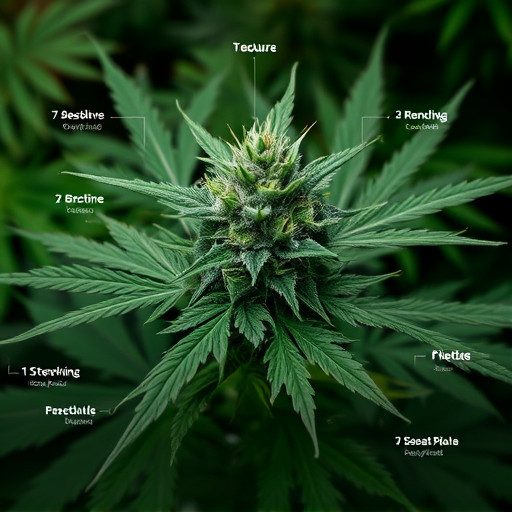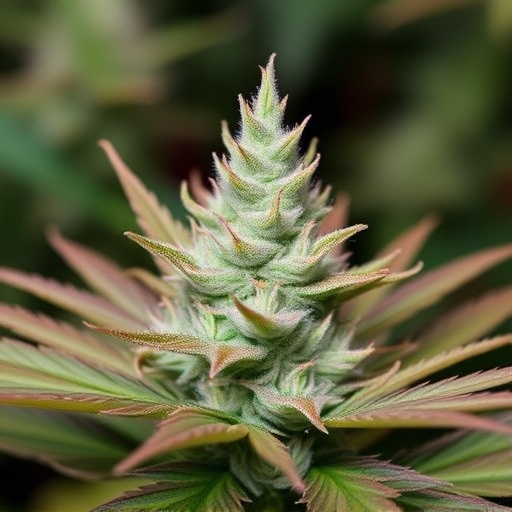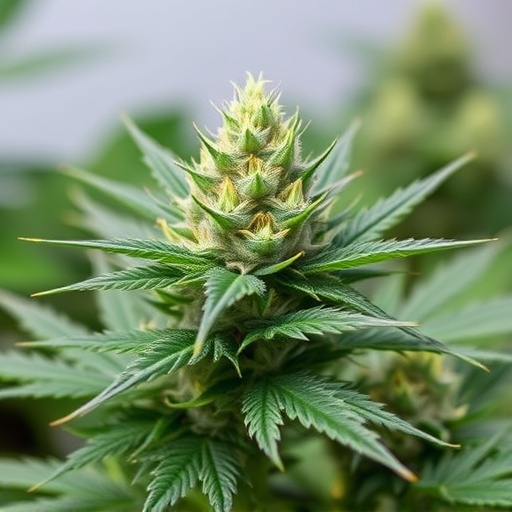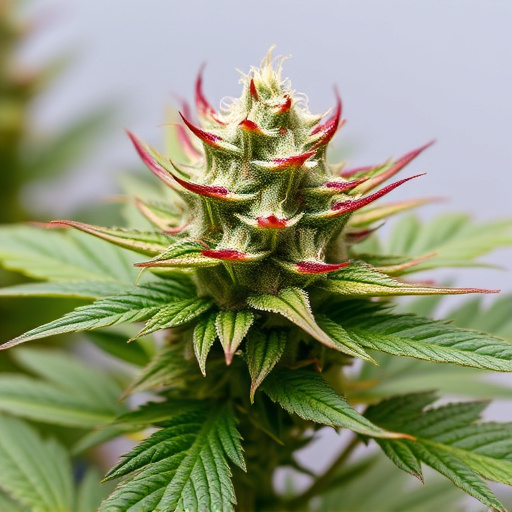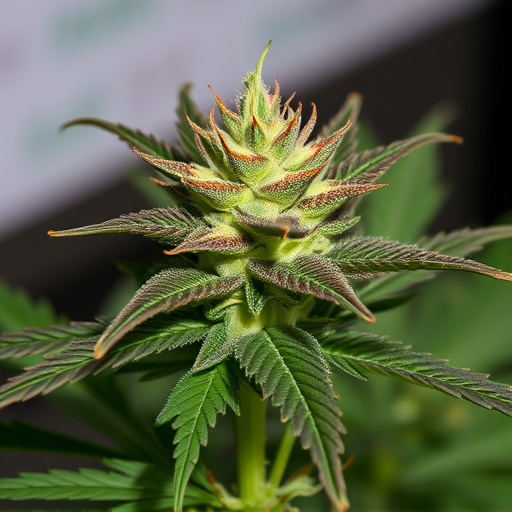Temperature significantly affects the absorption and effectiveness of cannabinoids like THC and CBD in best medical cannabis strains, with optimal ranges varying between compounds. Smoking, vaping, edibles, and topical applications each have ideal temperature ranges to maximize bioavailability. For instance, lower-temperature vaporization enhances THC's medicinal properties without intense psychoactivity, while specific temperatures maximize CBD solubility and cellular membrane crossing. Solvent-based extraction relies on precise heat management, with different solvents extracting cannabinoids at specific temperatures. Understanding these nuances is crucial for producing high-quality cannabis products tailored to medicinal needs. The optimal temperature range for best medical cannabis strains is 160-210°F (71-99°C), depending on the cannabinoid, ensuring maximum effectiveness and stability.
“Uncover the science behind temperature’s subtle yet powerful influence on cannabis compounds. This article explores how heat interacts with THC and CBD, impacting their absorption and efficacy in medical cannabis treatments. From extraction methods to optimal temperature ranges, we delve into strategies to enhance the potency of best medical cannabis strains.
Learn about the art of harnessing temperature control for improved cannabis medicine, ensuring maximal benefits for patients.”
- Understanding Temperature's Role in Cannabis Compounds Absorption
- The Impact of Heat on THC and CBD Extraction Methods
- Optimal Temperatures for Best Medical Cannabis Strains Efficacy
Understanding Temperature's Role in Cannabis Compounds Absorption
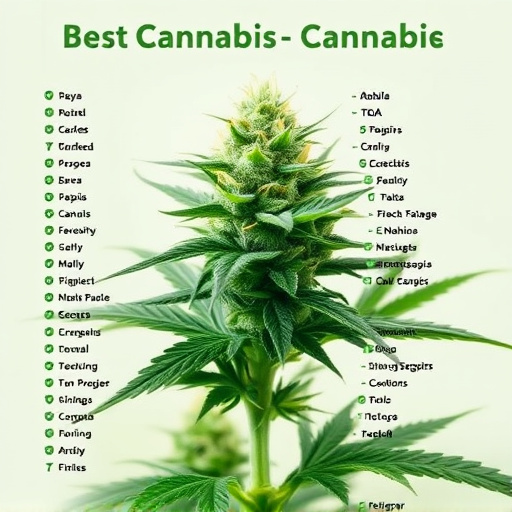
Temperature plays a pivotal role in the absorption and efficacy of cannabinoids, such as THC (tetrahydrocannabinol) and CBD (cannabidiol), found in best medical cannabis strains. The way cannabis is consumed—be it through smoking, vaping, edibles, or topical applications—greatly influences how these compounds interact with our bodies.
When consumed, cannabinoids bind to receptors in the endocannabinoid system, which regulates various physiological processes. Optimal temperature ranges ensure that these compounds are bioavailable and effectively absorbed into the bloodstream. For instance, THC vaporization at lower temperatures allows for a more controlled release, enhancing its medicinal properties without inducing excessive psychoactive effects. Similarly, CBD absorption is maximized when consumed at temperatures that facilitate its solubility, ensuring it can cross cellular membranes efficiently. Understanding this temperature-absorption relationship is crucial for optimizing cannabis treatments and tailoring them to individual patient needs.
The Impact of Heat on THC and CBD Extraction Methods
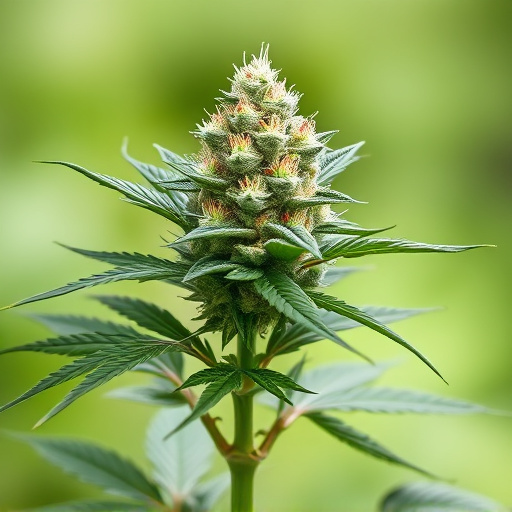
The process of extracting THC (tetrahydrocannabinol) and CBD (cannabidiol) from plants involves various methods, each with its own set of considerations when it comes to temperature. Heat plays a pivotal role in determining the efficiency and quality of these extraction processes. For instance, in solvent-based extraction, which is widely used for producing concentrated cannabis oils, temperature control is critical. This method employs solvents like ethanol or butane to extract cannabinoids from plant material. The ideal temperature varies depending on the chosen solvent; for ethanol, it’s typically around 70-80°C, while butane extracts at higher temperatures.
When considering the best medical cannabis strains known for their high THC and CBD content, proper heat management becomes essential. Different strains may require specific temperature ranges during extraction to preserve their unique cannabinoid profiles. Moreover, temperature can significantly affect the potency and bioavailability of these compounds. Heat exposure can alter THC’s structure, impacting its potential psychoactive effects. On the other hand, moderate heating can enhance CBD solubility, making it easier to isolate and potentially increasing its therapeutic benefits. Thus, understanding how heat influences extraction methods is crucial for producing top-quality cannabis products.
Optimal Temperatures for Best Medical Cannabis Strains Efficacy

The optimal temperature range for maximizing the efficacy of best medical cannabis strains is a delicate balance. Studies suggest that different cannabinoids, like THC and CBD, have specific temperature ranges where they become more bioavailable. For THC, a moderate heat of around 180-210°F (82-99°C) is ideal for vaporization, as higher temperatures can degrade its potency. On the other hand, CBD is more stable at slightly elevated temperatures, with optimal absorption occurring between 160-180°F (71-82°C).
Understanding these temperature ranges allows cannabis users to make informed decisions when selecting their consumption methods. For those seeking the full spectrum of cannabinoids for medicinal purposes, controlling the temperature during vaporization or decarboxylation is key to unlocking the best medical cannabis strains’ potential benefits.
In understanding how temperature influences the absorption of vital cannabis compounds like THC and CBD, we gain crucial insights into enhancing the efficacy of best medical cannabis strains. The optimal temperature range for extraction methods ensures these compounds’ stability and bioavailability, thereby maximising therapeutic benefits. By applying this knowledge, cannabis consumers can make informed decisions to achieve the desired effects from their chosen strains.


